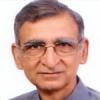The Green of the valley has been regularly witnessed the blood of militants, Kashmiris, personnel from armed forces and now even those of tourists. In the month of May (2018) earlier this year a school bus was stoned leading to the death of an eleven year old child. This is the background in which Mehbooba Mufti the Chief Minister of Kashmir, sitting on the heap of a coalition, which is ideologically spilt down to the last, requested for a unilateral ceasefire in Kashmir in the holy month of Ramadan. Kashmir lately has witnessed increased violence as Central Government, which is calling the shots in Kashmir has adopted the iron fist policy substituting the earlier one of being part sensitive to the grievances of local population. It is during this period that the fake encounter of Burhan Wani unleashed a series of protests, and the disgruntled and alienated youth intensified their favorite method of protest, ‘stone pelting’. Now the frustration levels of the protesters are so high that they are not scared of the consequences of the repressive steps of the state.
The earlier UPA era of ‘dialogue with firm handling’ has given way to the muscular, hyper nationalist high handed attitude, which in turn has increased the incidences of violence in the valley. So far in 2018, forty militants, twenty four soldiers and thirty seven civilians have lost their lives. While PDP earlier was talking separatist language, it tied up with Hindu nationalist BJP, which has been asking for abolition of article 370, the autonomy clause, for the sake of grabbing power. BJP as such is wearing its anti minority stance on its sleeves and is out to undermine the Muslim majority of the state. Mehbooba Mufti is in the catch 22 situation, neither can she exercise the policies which can sooth local sentiments nor is she able to counter the high handed Hindutva policies of its ally BJP. While the major implementation of the high handed attitude is from the center, Mufti seems to be a mute witness barring probably the lone example of Kathua rape and murder where she could assert and the BJP leaders had to bite the dust.
The present scenario, worsening by the day, may affect the tourism, which is the prime source of revenue in the state. The plight of average Kashmiri needs all the empathy as with BJP rule in the center matters have taken an adverse direction. The simmering discontent, which came out in the form of stone pelting is worsening by the day due to lack of mechanisms of democratic protests and the possibility of dialogue from the authorities. Chief Minster has been calling for dialogue but she has been overruled by the BJP, as its interests are to keep up the intimidating dominating attitude for its electoral and divisive Hindu nationalist goals.
Most of the times; all the blame of discontent is passed on to the instigation from Pakistan alone. The fact is that Kashmiris are dissatisfied due to multiple factors, role of Pakistan being just one of these. The Al Qaeda clones are another and the attitude of the army is not helping the matters in any way. Army’s basic duty is to protect the borders from the enemies. Here a civilian area is under army’s control from decades. Army’s attitude was exemplified when Farooq Ahmad Dar, a weaver, who had come to cast his vote, was used as a human shield and army is trying to defend the action of the officer who subjected a civilian to such an ignominy. He was tied for over five hours and now he stands to live with humiliation all his life. Can such attitudes let the people live their lives in the normal way in such a situation? Earlier there were articulations about autonomy to state assembly, as promised in the treaty of accession; it’s no more on the mind of those in the power. The central hallmark of democracy is the process of dialogue, which is missing in the state. Many earlier leaders had attempted to bring peace; Vajpayee’s famous doctrine was aiming at peace, progress and prosperity in the Valley by bringing in the spirit of Insaniyat (Humanity), Jamhuriyat (Democracy) and Kashmiriyat (Identity of the people of Kashmir). It also aimed at improving relations with Pakistan. Mehbooba Mufti is reminding the present rules of Vajpayee doctrine, but her plea seems to be falling on deaf ears.
UPA II undertook a major step by appointing a team of interlocutors. Dileep Padgaonkar, M M Ansari and Radha Kumar. They undertook extensive interaction with diverse groups within the state and submitted their recommendations, which were basically asking for promoting autonomy of state assembly, dialogue and improvement of relations with Pakistan. The report is lying deeply ignored. It is time that this report, the last major step at reconciliation on the issue, is revived to bring in peace in the Valley. The BJP’s role in the alliance has been very negative and has marginalized the Muslim community in a Muslim majority state. Can Mehbooba Mufti assert herself to articulate the democratic aspirations of the people of Kashmir are the question we need to ask. The anger of people against Mufti has grown immensely. The ceasefire declared by the Government is a welcome move and it needs to be backed up by humane policies to restore peace in the valley.








Comments
Add new comment